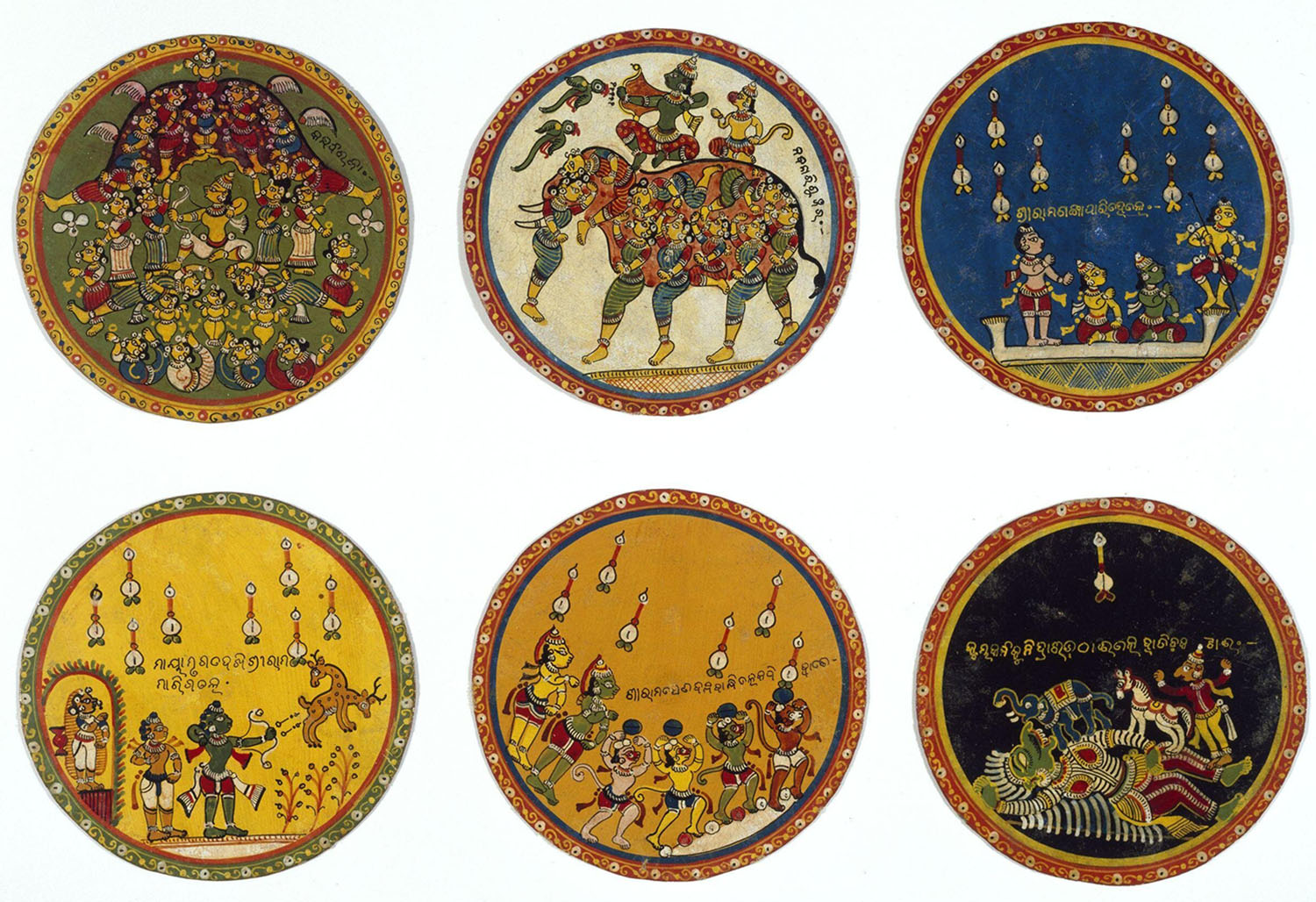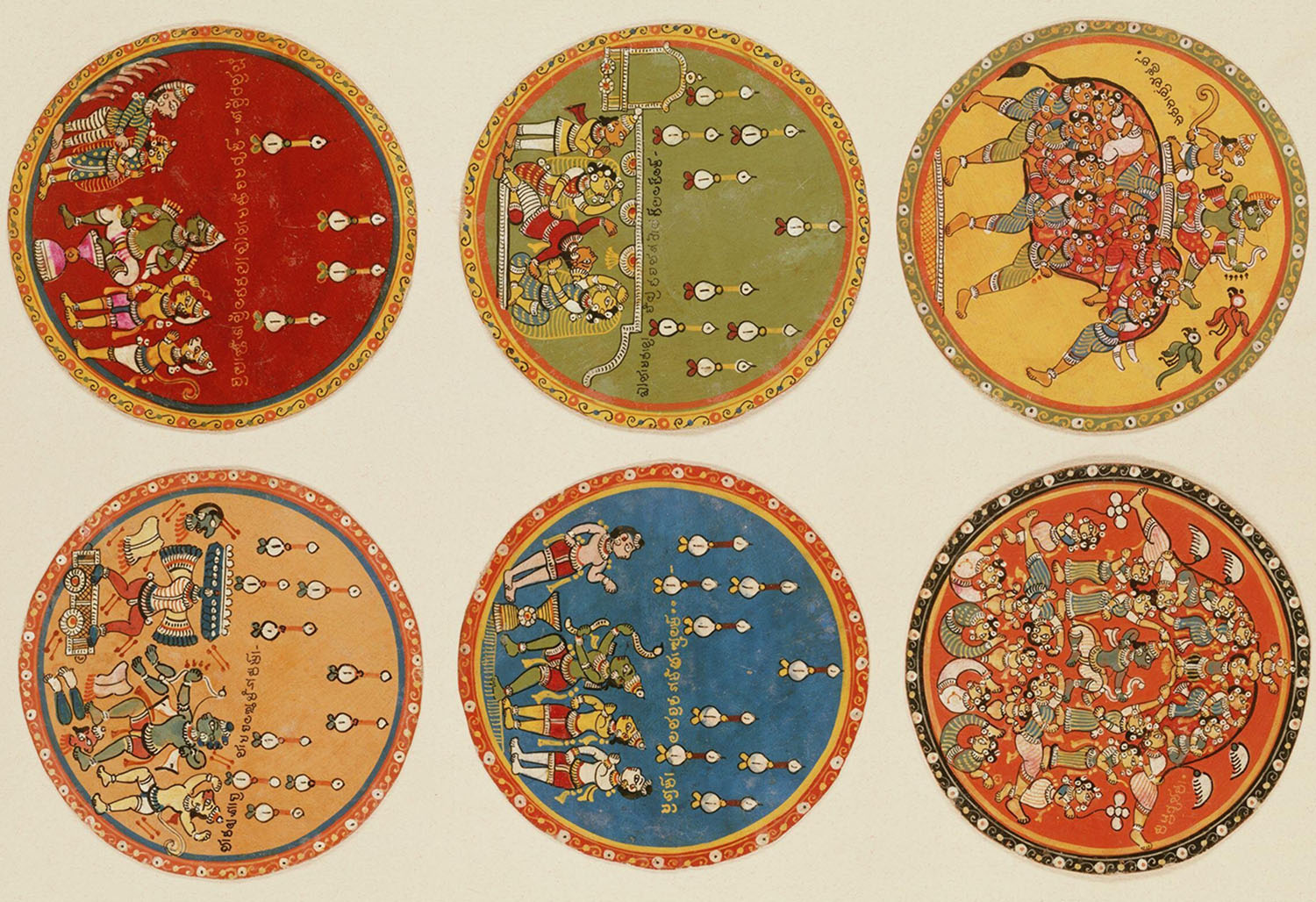ARTICLE
Ramayana Ganjapa
A version of Ganjifa — locally called Ganjapa — played in Odisha, Ramayana Ganjapa was historically made in the Subarnapur district. The imagery of the deck derives from the Ramayana, while the gameplay and overall structure remain that of Mughal Ganjifa.
The suits in a standard Ramayana Ganjapa deck are divided to depict the warring forces of Ram and Ravan in the battle of Lanka, with six suits commanded by Ram and the other six commanded by Ravan. Like most Ganjifa decks, each suit has ten number cards and two court cards – a king (raja) and a minister (pradhan) – which are the strongest cards of the suit. The six Ram suits have ten as the weakest number card and ace as the strongest, while the opposite applies to the Ravan suits. The king cards of each suit feature different characters from the Ramayana, depicted under the canopy of a chariot along with two attendants. The minister cards are shown as men or monkeys accompanying their king in the Ram suits, and men or demons on horseback in the Ravan suits.
The suit signs represent key aspects of each character’s role in the Ramayana. The Ram suits and their respective suit signs are: Ram and arrows; Lakshman and quivers; Sugriva and monkeys; Jambavat and bears; Hanuman and hills or mountains; and Vibhishana and swords with shields. The Ravan half of the deck has only two named suits: Ravan, whose suit sign is a mace, and Indrajit, whose suit sign is a nagapasha or a noose made with snakes. The remaining four are unnamed “follower” suits with uniformed kings on chariots. Their suit signs are swords, daggers, a spear and a koont (a two-pointed Odia spear) respectively. Although he belongs to the Ram suits, Vibhishana, as shown in the king card of his suit, is dressed in the same coat and trouser uniform as the kings and ministers of the Ravan suits. In the Ramayana, he is described as Ravan’s brother, but defects to Ram’s side during the battle of Lanka, and his apparel in the suit’s design is likely meant to reflect this change of allegiance.
Like the other Ganjapa decks of Odisha, Ramayana Ganjapa is rarely made today. The most recent sets, produced a few decades ago, adhere to standardised designs and lack the innovative craftsmanship that was common until the early twentieth century. Historic examples of Ramayana Ganjapa decks can be found at the Victoria and Albert Museum, London, UK and the Philadelphia Museum of Art, USA.
Bibliography
Our website is currently undergoing maintenance and re-design, due to which we have had to take down some of our bibliographies. While these will be re-published shortly, you can request references for specific articles by writing to hellomapacademy@map-india.org.








